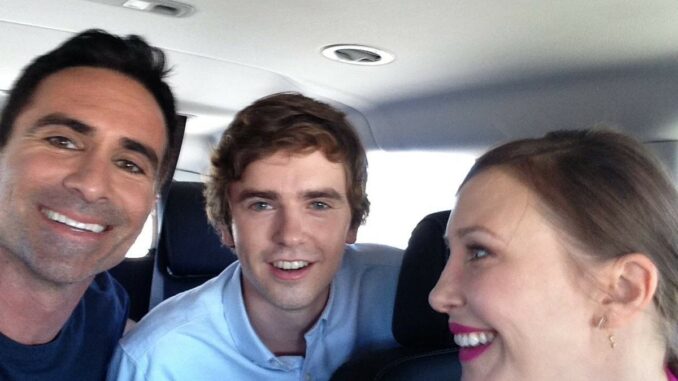
In the crowded landscape of medical dramas—where high-stakes surgeries, rushed diagnoses, and steamy on-call romances often dominate screen time—The Good Doctor has carved out a space of its own. It’s not just about what happens in the operating room; it’s about why it happens, who it affects, and what it means. More than any other show in its genre, The Good Doctor dares to slow down, question, and reflect. The result? A nuanced exploration of medical ethics, emotional truth, and the fragile humanity behind every clinical decision.
At the heart of this philosophical approach is Dr. Shaun Murphy, a young surgeon with autism and savant syndrome. His cognitive and emotional differences aren’t simply narrative quirks—they are the lens through which the audience is invited to re-examine deeply ingrained assumptions. Where some might rush past the human implications of a case, Shaun pauses, ponders, and often pushes others to look beyond the obvious. In doing so, the show turns his perceived limitations into profound insight.
From the outset, The Good Doctor makes it clear that it is willing to wrestle with moral gray zones. It doesn’t provide easy answers, and that’s its strength. For example, when faced with a terminally ill patient who wishes to undergo a risky surgery for a slim chance at survival, the team must debate: is the surgery an act of hope—or of denial? Shaun’s black-and-white approach to facts often clashes with the emotional instincts of his colleagues. But instead of resolving the tension, the show leans into it, letting characters—and viewers—sit with discomfort.
One of the series’ most consistent themes is autonomy: who gets to make decisions, and why? The Good Doctor repeatedly explores scenarios where medical recommendations conflict with patient desires, family pressures, or hospital policy. Whether it’s a young girl refusing a life-saving surgery because of her faith, or a parent demanding treatment for a brain-dead child, the show doesn’t tiptoe around controversy. It presents all sides, gives voice to opposing beliefs, and trusts the audience to think critically.
What sets The Good Doctor apart is how it balances these heavy issues with emotional depth. The show recognizes that ethics are not abstract—they’re lived, often painfully, by those in white coats and hospital gowns. Each episode asks, What does it mean to do the right thing when there is no perfect answer? And perhaps more importantly: How do we live with those decisions after they’re made?
Much of the show’s moral resonance comes from the emotional journeys of its characters. Shaun, with his analytical brilliance and social struggles, is often the catalyst for these deeper conversations. He asks the questions others avoid. He sees the world in unfiltered logic, which often cuts through emotional noise and exposes uncomfortable truths. But as he grows, so does his understanding of nuance—and his ability to feel. His evolution doesn’t just reflect personal growth; it mirrors the very journey the show is inviting viewers to take.
Other characters bring their own ethical baggage and perspectives. Dr. Claire Browne leads with compassion, sometimes to a fault, often struggling with whether emotion clouds her judgment or enhances it. Dr. Audrey Lim often faces the impossible tension between hospital policy and personal conviction. Dr. Aaron Glassman, as both a physician and a cancer survivor, brings the sobering weight of lived experience to every case. Each character’s background informs their choices, creating a chorus of ethical voices rather than a single moral authority.
The Good Doctor also excels at showing the cost of ethical decisions—not just on patients, but on the doctors themselves. Burnout, guilt, regret, and even PTSD are woven into storylines with realism and care. These aren’t just medical professionals—they’re human beings constantly navigating the toll of life-and-death decisions. The show reminds us that moral clarity is a luxury rarely afforded in medicine.
Importantly, the show doesn’t shy away from showing its characters fail. Sometimes they make the wrong call. Sometimes they let pride, fear, or bias interfere. But in those moments, The Good Doctor doesn’t condemn—it explores. It asks, How do we learn from failure? How do we forgive ourselves? And how do we keep showing up, day after day, knowing we might get it wrong again?
This humanistic approach extends beyond the main cast to the patients, who are rarely one-dimensional. Even those who make seemingly irrational or controversial choices are treated with dignity. Their beliefs, cultures, fears, and hopes are given space to breathe. The Good Doctor understands that patients are not just plot devices—they are mirrors reflecting our own vulnerabilities and values.
From a narrative standpoint, the show’s courage lies in its pacing. It doesn’t rush to resolution. Instead, it allows tension to build and questions to linger. Viewers are encouraged to empathize, to wrestle with uncertainty, and to see the hospital not just as a place of healing—but as a stage for some of life’s most difficult moral dramas.
And through it all, empathy is the guiding principle. In fact, The Good Doctor might be the most empathetic show on television. It invites viewers to care—deeply and unapologetically. Whether it’s the heartbreak of a dying child, the ethical quandary of assisted suicide, or the quiet devastation of a surgeon losing a patient, the show never treats emotion as a weakness. It treats it as a truth.
In the end, The Good Doctor isn’t just a show about medicine. It’s a show about being human. It reminds us that behind every diagnosis is a person with fears, dreams, and dignity. That every doctor, no matter how skilled, is just another soul trying to do their best in an imperfect world. And that every choice—ethical, emotional, clinical—matters.
